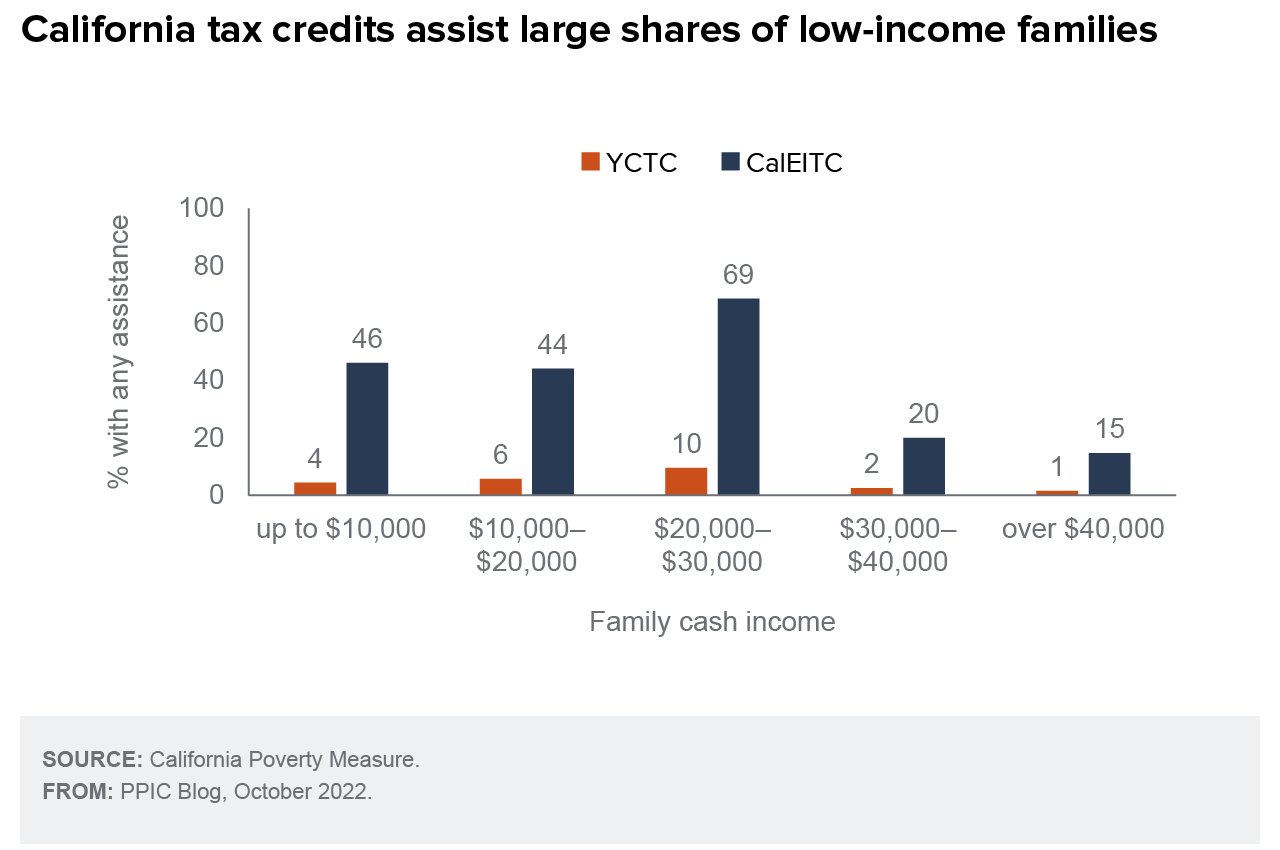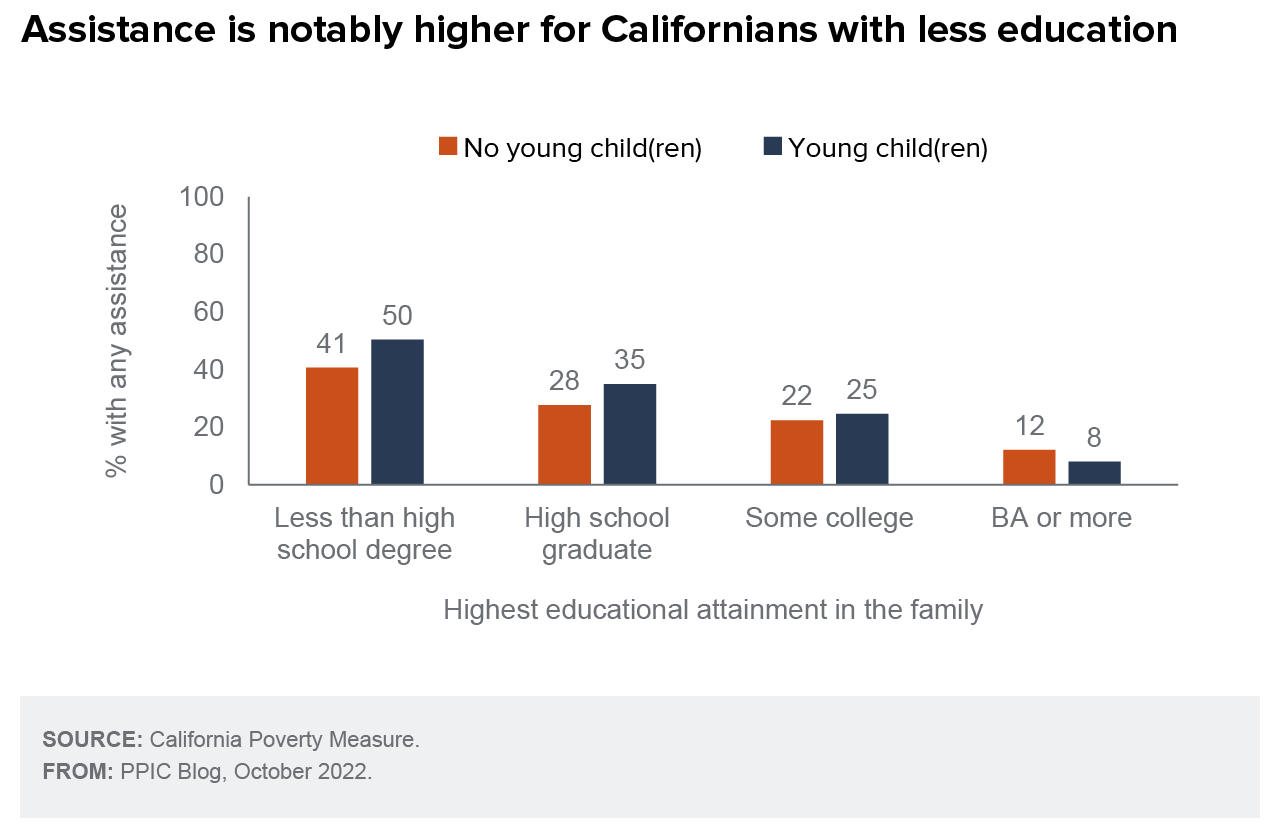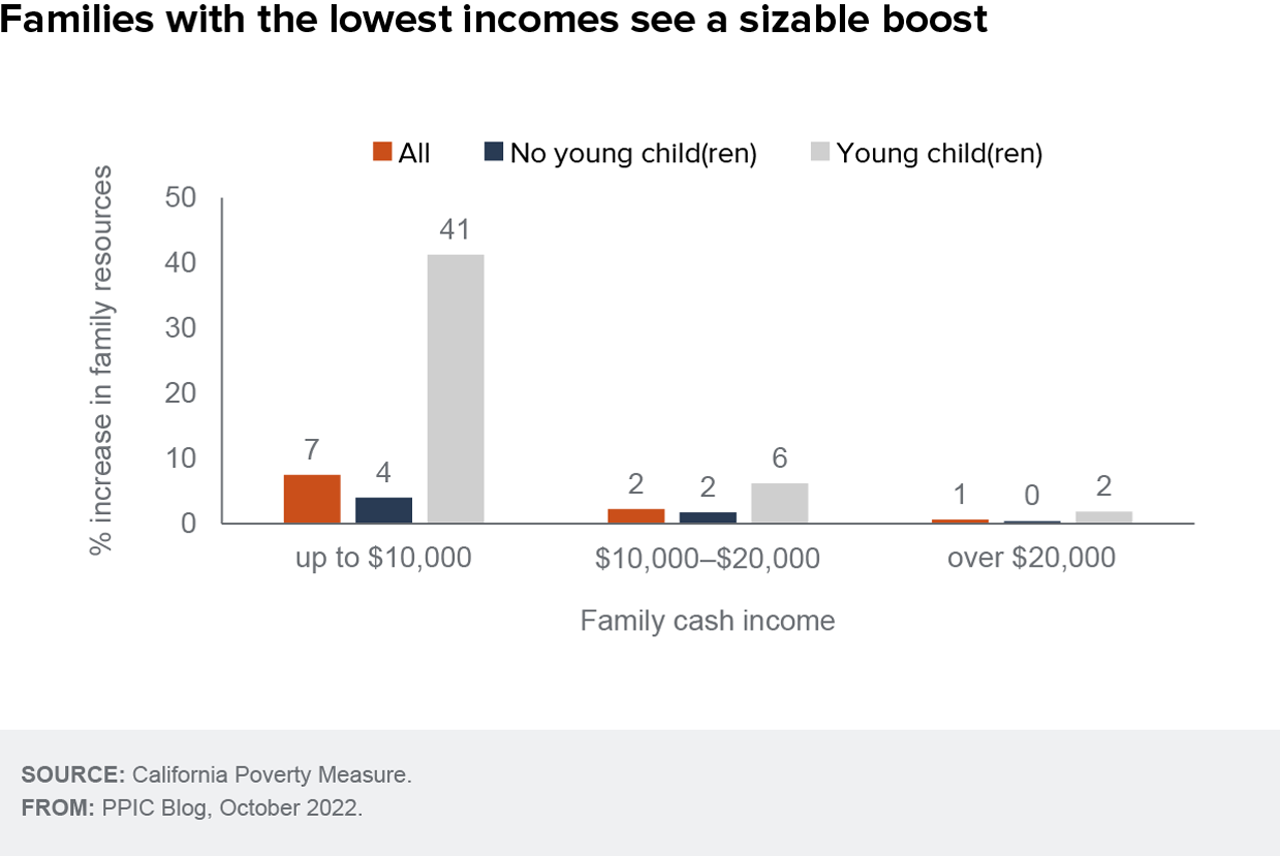Caroline Danielson, policy director and senior fellow, testified before the Assembly Committee on Revenue and Taxation on Examining the CalEITC and Increasing its Utilization by Working Californians today (October 3, 2022). Here are her prepared remarks.
Thank you to Assemblymember Irwin, Assemblymember Nguyen, and committee members for inviting me to speak with you today. I would like to make three main points grounded in my experience as a researcher studying the role of tax credits in helping families make ends meet. Throughout, I draw on data from the California Poverty Measure (CPM), a collaboration between PPIC and the Stanford Center on Poverty and Inequality.
My first main point is that state tax credits assist a large share of low-income families. This first chart shows the share of families receiving any refund from the California Earned Income Tax Credit (CalEITC) and from the Young Child Tax Credit (YCTC). Among families with cash incomes under $30,000, close to half to two-thirds benefit from the CalEITC (44%-69%). These shares are higher than the federal EITC, which assists a quarter to a third of families with cash incomes under $50,000 (not shown).

Please note that throughout we will look at the credits from the perspective of the family rather than the tax filing unit. While these can be the same, they are not always—for example, cohabiting adults or multi-generational families likely file taxes as smaller units. This also means that the percentages shown do not strictly relate to take-up rates.
Looking at the same data by educational attainment, we see a clear pattern. For example, 50% of families with young children (ages 0-5) and less than a high school degree benefit from these two credits, while just 8% of families with a college degree do so. This is not surprising, given the strong positive correlation between higher levels of education and greater earnings.

It is notable that assistance from these credits is fairly widespread, even in families without young children and even though the design of the credits provides much higher dollar amounts to families with young children. In other words, for all families with low levels of cash income, the reach of the CalEITC is now quite broad.
However, these facts presage difficulties in outreach efforts intended to increase filing and ultimately receiving the credits. Those with very low incomes are not required to file taxes. And those with less formal education may have more difficulty in contending with the complexities of filing taxes. More on take-up issues in a moment.
My second overall point is that the CalEITC and YCTC play important roles in mitigating poverty—but mainly for those who live well below the poverty line. Credits are targeted to those with quite low incomes, and this chart shows those with cash incomes up to $10,000, from $10,000 to $20,000, and $20,000 and above. Focusing on families with these low income levels rather than on those at the poverty line allows us to show the effects of these programs more fully. The CPM poverty line is on average nearly $37,000 for a family of four—and so the share of people moved out of poverty by these credits is relatively small compared to several other safety net programs. But if we zoom in on the percentage boost to resources—including family resources from both earnings and safety net programs—for families with low levels of cash income who do get the credits, we see a substantial boost to annual family resources at the lowest level. This increase amounts to 7% overall and 41% for families with any children ages 0-5.

A key takeaway here is the potential for state tax credits to substantially assist those with the lowest cash incomes. It is also worth recalling the large research literature showing that the federal EITC has downstream positive consequences beyond boosting resources among low- and moderate-income families—although we do not as of yet have the same body of literature about the more targeted CalEITC.
So far we have seen that the credits are common and can be important boosts to family resources, particularly for families with low cash incomes and less education. But according to recent research a quarter to a half of the lowest income eligible families are missing out on the credits.
My third overall point is directed toward take-up. There is an important distinction between those who file taxes (but miss the credits) and those who do not. Filers have already taken the first necessary step—and efforts to inform those who miss the credit have been shown to be effective. However, recent California research indicates that two-thirds of those who do not benefit from the CalEITC have not filed their taxes.
There are two particular challenges in reaching non-filers. The first is that many potential claimants have incomes below the level required to file—precisely the low incomes that the state credits are especially targeting. The second is wariness around claiming credits. In 2020, the state expanded eligibility to ITIN holders—those who lack a social security number—but the level of mistrust of government and misunderstanding is likely higher among undocumented and mixed immigration status families, potentially stifling uptake. Research from other safety net programs shows a chilling effect of the previous federal administration’s proposed changes to the public charge rule, for example.
Unfortunately, recent California research shows that low-touch nudges are not enough to prompt non-filers to file. However, it is not clear that knowing about the EITC specifically is necessary. Rather, simply designing strategies to increase filing will be a big advance in making the credits universally accessible.
Key strategies to increase tax credit take-up include continuing to build our understanding of who does and does not file—this is critical to developing well-targeted strategies. For example, among those who do file, characterizing differences between those who always file and those who sometimes file across a span of years can help fill the non-filing gap in any single year.
Research can also help pinpoint characteristics of filers who, though eligible, are less likely to receive state credits. Finally, building on research by the California Policy Lab, linking data to other programs like CalFresh, or indeed WIC, can help policymakers to develop effective strategies to convert non-filers to filers.
Expanding a network of trusted messengers who can offer higher-touch nudges to file is an approach that holds promise. For families with children, this could include trusted programs and places with statewide reach but local focus, such as WIC and public schools—however, simple notifications about potential eligibility are not likely to move the needle.
It is also important to recognize that—at least for now—paid tax preparers play a large role, so while expanding opportunities for in-person and on-line free filing are important, considering how to leverage the role of paid preparers is worth consideration. Research has shown that availability of nearby tax preparation services and tax preparation software increased federal EITC take-up.
Finally, steps—even small ones—toward automatic filing could help overcome the key hurdle to claiming California tax credits. As we saw with federal stimulus payments in 2020 and 2021, along with the 2021 Advance Child Tax Credit, there will still be challenges in reaching all eligible families. Nonetheless, automatic filing addresses a key barrier to claiming credits.
In closing, in our work on the California Poverty Measure we consider tax credits an essential component of resources that help families make ends meet. Some good news is that in comparison other key state safety net programs—including CalFresh and CalWORKs—overall take up for tax credits is comparable or higher. Increasing that take up would make a big difference in the lives of Californians in especial need—even though doing so will require significant effort.
Thank you for the opportunity to share this research perspective with you today.




